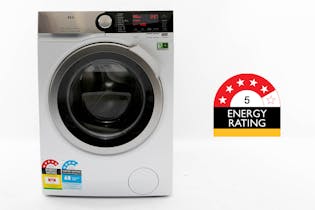You’re washing your clothes too often
7 tips to make your wardrobe last longer.
Many of us have been brought up thinking we need to wash our clothes regularly to keep them clean and hygienic. However, washing clothes too often can damage the fibres, breaking down the material and making it look worn.
Textile waste is one of New Zealand’s fastest growing waste streams, with more than 220,000 tonnes ending up in landfills each year.
Washing too often can also release microplastics into the waterways. Not only does this pollute the ocean, it ends up coming back to bite us when we bite into a piece of microplastic-filled fish. A 2022 study conducted by the University of Otago found microplastics in 75% of a sample of 155 commercially caught fish destined for human consumption.
Add that to the rising cost of living and it makes a whole lot of sense to take better care of what you already own. Both your wallet and the planet will thank you.

7 steps to make your clothes last longer
Underwear and socks do need washing after every use, but the rest of your wardrobe ... not so much. If you’re washing trousers or a jacket after just one or two wears, think again.
Air out
If clothing such as trousers, jackets, jerseys or skirts aren’t dirty but need some freshening up, try hanging them where they can air out, like near an open window or on the clothesline. Air and sunlight are great natural cleaners.
Stop washing your jeans
There’s a reason cowboys practically lived in denim. The sturdy material is thicker than your average clothing, so you can get more wear out of it between washes. The fact is that microbes found on jeans after you wear them (skin cells, natural oils and so on) are harmless, making frequent washing unnecessary. You only really need to wash your jeans if they’re dirty or start to smell.
The Chief Executive of Levi’s Jeans famously said he only washes his jeans once a year. While that may not appeal to everyone, experts’ opinions differ widely on this subject. The general consensus is you should be able to wear your jeans up to 10 times before they need freshening up. In between wears, simply air them out if needed.
Spot clean
Instead of chucking it in the wash, try spot cleaning sweaty underarms, stains or marks – just treat stains as soon as possible. If your clothing is smelling a bit funky, then by all means wash it! But if it’s just the armpits that smell and the rest is pristine, it doesn’t make sense to clean the whole item.
Wash inside out
Simply turning clothing inside out can minimise fading as well as protect the visible side of the garment from the friction that occurs in the wash cycle.
Read the label
It’s very tempting to chuck everything in the wash and hope for the best. But that little tag with the care instructions is there for a reason. Under the Fair Trading Act, all clothing must have a care label (except for secondhand).
I’ve destroyed enough pieces of clothing in my life to know which to hand wash and which I can add to the wash with minimal repercussions. I personally like to think of the tag as a guideline. Some rules are made to be broken, but you won’t know which ones until you’ve familiarised yourself with the material.
If you have extra time, washing by hand gives you a good feel for the material. Also, it helps you to make informed decisions about which care labels to follow and which you can be more lenient with.
Rinse after taking a dip
Swimwear needs to be soaked, or at least rinsed in cold water, after every use. Salt water and chlorine both break down the fibres and elastic over time, causing your swimwear to stretch out of shape. Avoid unfortunate swimwear mishaps by treating your swimwear to a cold bath after a swim.
Give elastic a day off
If you wear the same bra every day, it’s going to lose elasticity faster. Elastic stretches with use. And so by giving it a break and rotating through your options, it’ll last longer.
Wearing the same thing back to back doesn’t give it a chance to breathe and just shortens its lifespan.
The history of washing clothes
Early settlers washed clothes in rivers and lakes or carried the water to their homes. In the 19th century, washing clothes was an exhausting day-long process, usually done once a week on a Monday.
By 1956, more than half of New Zealand households had an electric washing machine. This was because piped hot water and electrical appliances became more common and the price of running a washing machine dropped. The proportion of households with a machine grew to more than 90% by 1971.
It’s now easy to do the washing as often as we want – but that doesn’t mean we should.
We've tested 158 washing machines.
Find the right one for you.



-energy-star.jpg&w=315&q=75)
Member comments
Get access to comment